forum
library
tutorial
contact

Biologists Bring Sockeye into Idaho on
Trucks to Get Them Out of Hot Water
by Rocky Barker
Idaho Statesman, July 17, 2015
|
the film forum library tutorial contact |

|
Biologists Bring Sockeye into Idaho on
by Rocky Barker
|
"With climate change, there's going to be winners and losers," said Graves. "With sockeye
it's going to be a challenge, but for Snake River fall chinook it may not bother them at all."
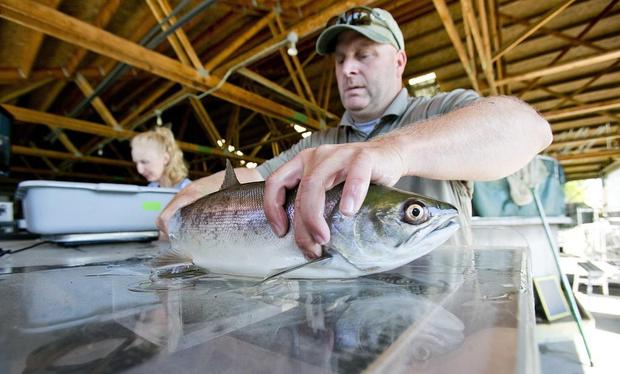 Five sockeye salmon swam in tanks at the Eagle Hatchery on Wednesday wearing the scars of their shortened trip to Idaho.
Five sockeye salmon swam in tanks at the Eagle Hatchery on Wednesday wearing the scars of their shortened trip to Idaho.
Idaho Department of Fish and Game biologists took the unusual step of capturing the migrating adults in a trap at the Lower Granite Dam southwest of Pullman, Wash., the last of eight dams Idaho salmon swim through on their way from the Pacific to the Sawtooth Valley. That's because the Columbia and Snake rivers are as much as 6 degrees warmer than usual.
Northwest rivers are so warm that salmon and steelhead are dying in tributaries such as the Willamette and Deschutes rivers in Oregon. Oregon fisheries officials said Thursday that they are limiting fishing for trout, salmon, steelhead and sturgeon statewide to protect the fish from stress.
When temperatures in the main rivers reach at least 70, the heat places stress on the already challenged migrants that face sea lions, lamprey and the natural wear and tear of fighting the current on their return trip from the ocean to their Idaho spawning grounds.
River temperatures have been gradually rising for 50 years, due in part to the changing climate and the dams, where slackwater reservoirs capture extra solar radiation.
But with this year's temperatures higher than normal, dam and fisheries managers are working overtime to protect endangered wild salmon and steelhead as a federal judge decides whether they are doing enough to keep them from going extinct. U.S. District Judge Michael Simon, presiding over the latest salmon lawsuit brought by Oregon, the Nez Perce, sport and commercial anglers, and conservation groups against federal officials, was set to tour Lower Granite on Thursday.
MORE FISH KILLS
Joseph Bogaard, executive director of the Save our Wild Salmon Coalition that includes many of the plaintiffs, said the agencies aren't doing enough to address warming rivers.
"We ought to take steps wherever we can to help improve fish survival in an unusually warm and bad years," Bogaard said. "Unless the weather changes, we're going to see more fish kills throughout the basin."
In late June the Salmon River climbed to 76 degrees at Whitebird, warm enough to kill salmon and steelhead. Fortunately, the young juveniles, which left their spawning rivers and lakes early this year due to a warmer, earlier runoff, had mostly finished their trip to the Pacific before the heat wave, said Ritchie Graves, a biologist with NOAA Fisheries.
The spring-summer chinook adults also had migrated early upstream, reaching the higher, cooler spawning streams such as the Upper Salmon River, the South Fork of the Salmon, and Marsh and Bear Valley creeks. But the sockeye, which naturally spawn in Redfish and other Sawtooth Valley lakes, have faced the full brunt of the heat wave.
About 3,900 returning Snake River sockeye were detected passing Bonneville Dam east of Portland, the first dam on the Columbia River. Just 234 had passed Lower Granite as of Wednesday, including 15 that Fish and Game biologists had trapped as of Thursday.
At the Eagle Hatchery, the trapped fish swam in some of the same tanks that held Lonesome Larry, the single returning sockeye in 1992 whose genetics began the captive-breeding program.
The sockeye show the effects of the heat stress. One had bulging eyes and a tail shredded down to the flesh. Others had gaping ulcers and sores that were sapping their strength. With so many sockeye apparently killed in the lower rivers, state and federal biologists decided to trap and haul these returning sockeye 320 miles from Washington state to Eagle.
"This is giving them the best chance for survival," said Pete Hassemer, Idaho Fish and Game salmon and steelhead fisheries manager.
TAPPING NATURAL SELECTION
But it comes with a cost. The success of the captive breeding program, which produces more than 1,500 sockeye in a good year, is due in part to biologists being able to restore some of the wildness to the sockeye gene pool.
This wildness, or "fitness," as biologists call it, increases the sockeye's productivity and makes more of them able to make the long journey from the gravel of Redfish Lake some 900 miles to the Pacific, and then thousands of miles of swimming and growing in the Pacific before returning to Idaho in the fourth or fifth year of their life.
Capturing them at Lower Granite Dam cuts off their final migration in the Snake, through the Salmon and up to the Sawtooth Valley, 6,500 feet above sea level. That's not the scientists' first choice: It would be better if river conditions allowed the natural migration.
"We want those fish to make that last leg on their own," said Mark Peterson, a senior research biologist for Fish and Game.
"There is some natural selection there we want to tap," Hassemer said
The first sockeye are expected to arrive at the weir on Redfish Lake Creek anytime. Despite the more than 200 that did pass Lower Granite before trapping began, Fish and Game officials don't expect many to complete the trip.
Part of the challenge has been the warm temperatures at the Lower Granite Dam ladder. At 70 degrees Tuesday, the warm water was forcing salmon to hang in the cooler waters of the tail race below the dam.
The U.S. Army Corps of Engineers is working on a permanent modification to the ladder to flow cooler water to encourage migration. But the temporary fix isn't bringing temperatures down enough.
DIFFERENT FISH, DIFFERENT EFFECTS
On the larger scale, warmer water is going to become a bigger issue for salmon survival as the climate change trend continues, fisheries biologists say. It's different for each species.
Fall chinook below Hells Canyon just experienced the warmest winter temperatures in the Snake since the dam was built, NOAA's Graves said. But the very adaptable fall chinook simply emerged from their eggs earlier.
Fall chinook have delayed their migration until spring in some cases to improve their productivity. Steelhead and other salmon find cold springs along the migration route where they can stage until the rivers cool.
"With climate change, there's going to be winners and losers," said Graves. "With sockeye it's going to be a challenge, but for Snake River fall chinook it may not bother them at all."
Related Pages:
Sockeye Salmon Suffer Infections in Warm Columbia River System by Rich Landers, Spokesman-Review, 7/17/15
Biologists Bring Sockeye into Idaho on Trucks to Get Them Out of Hot Water by Associated Press, The Oregonian, 7/18/15
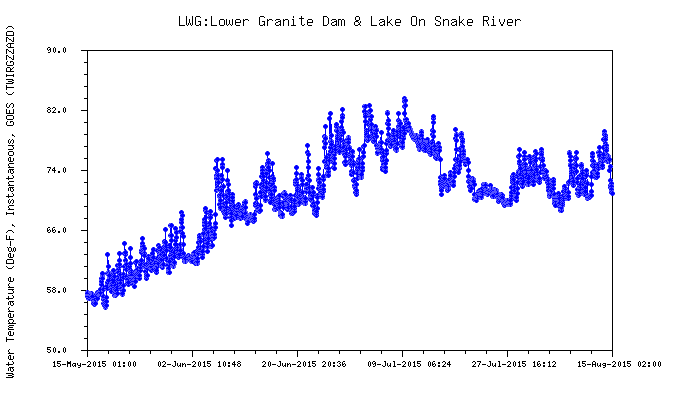
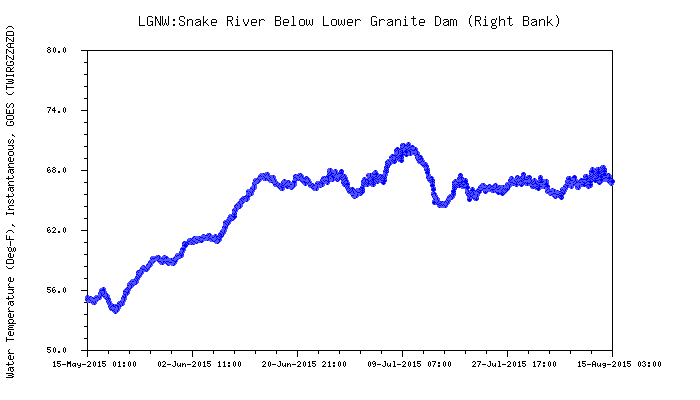
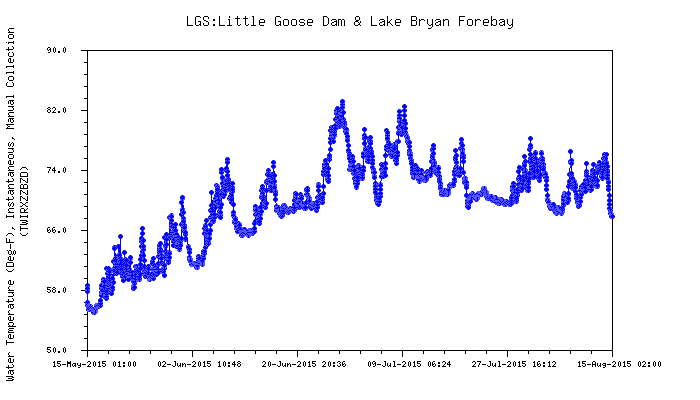
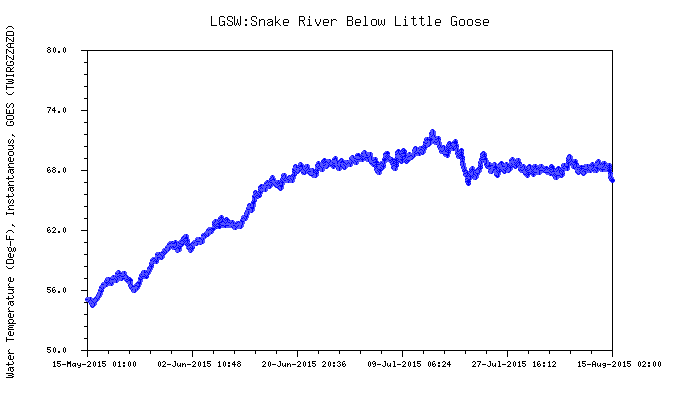
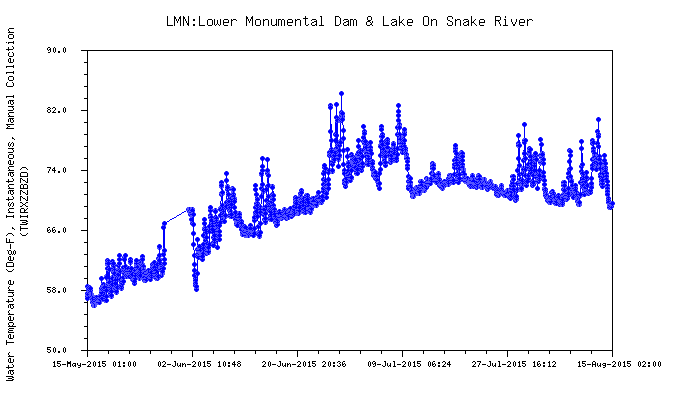
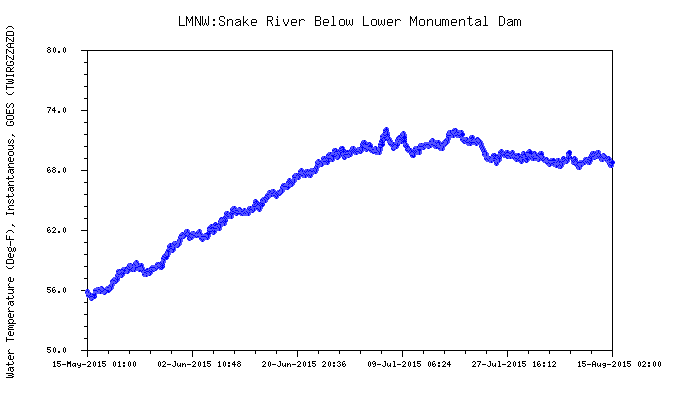
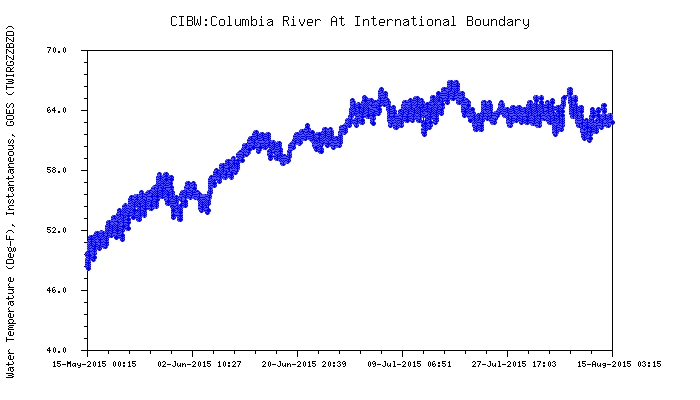
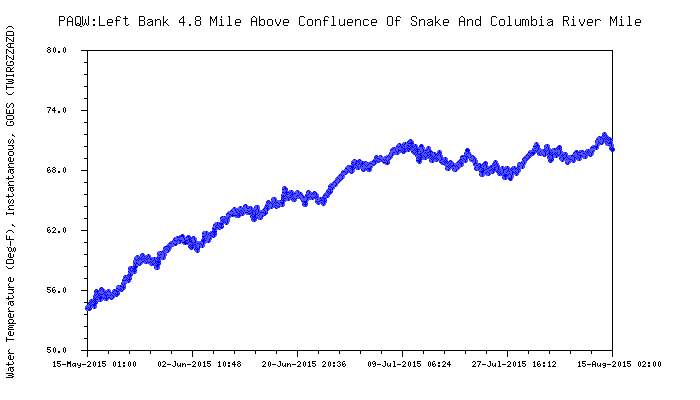
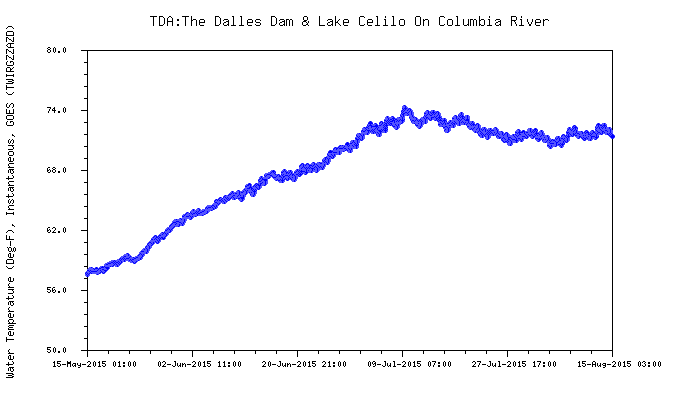

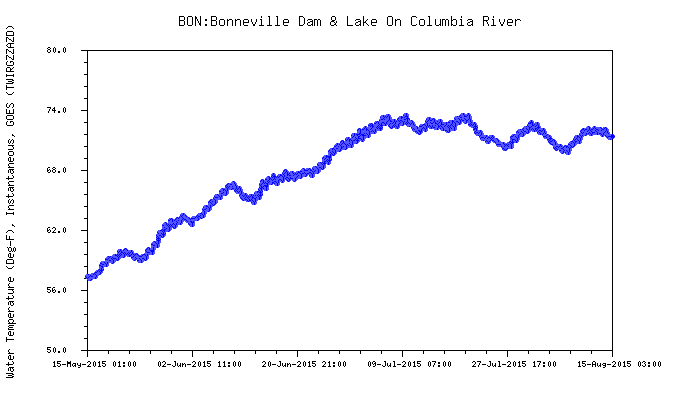
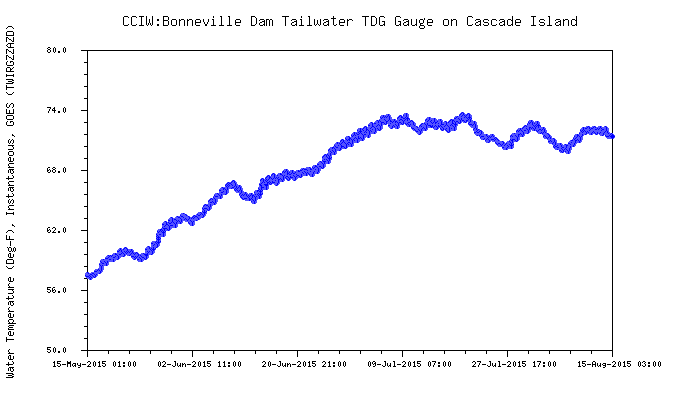
learn more on topics covered in the film
see the video
read the script
learn the songs
discussion forum
